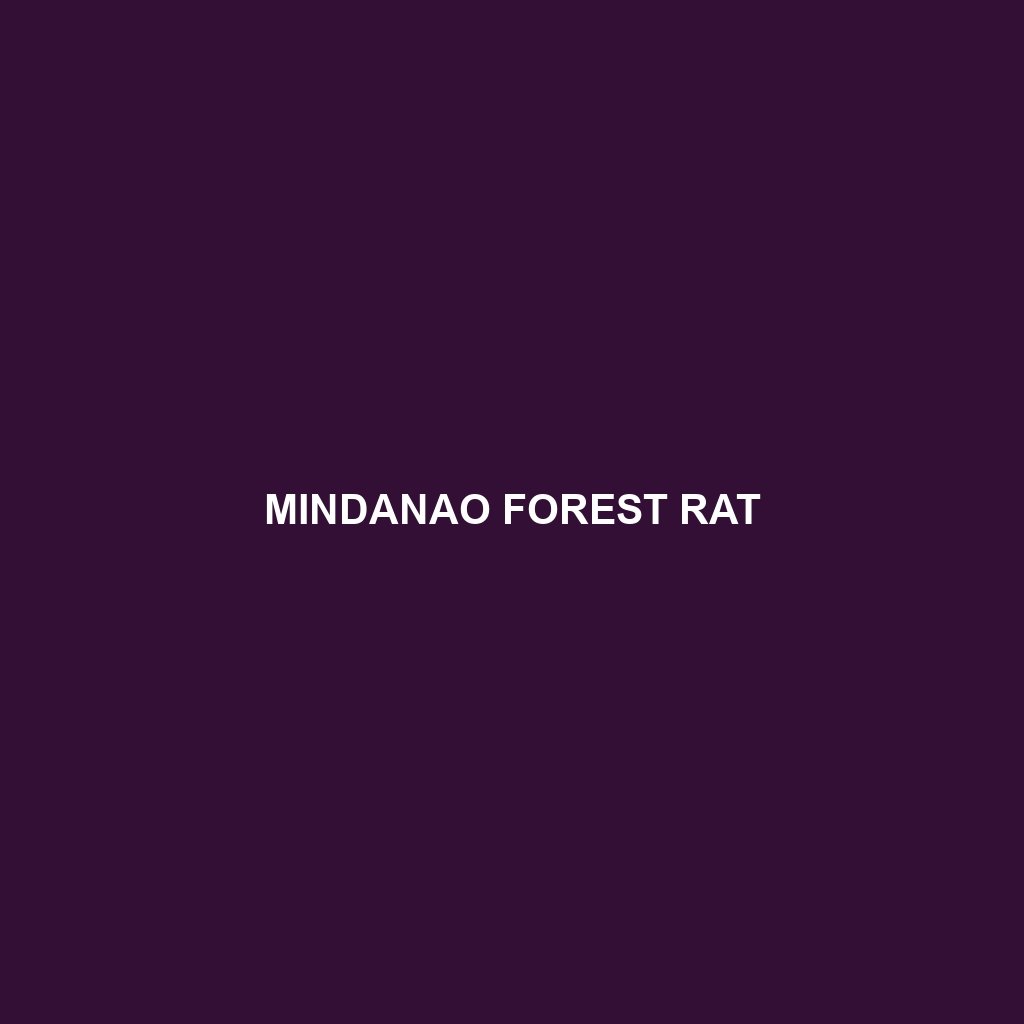Mindanao Forest Rat
Common Name: Mindanao Forest Rat
Scientific Name: Rattus mindanensis
Habitat
The Mindanao Forest Rat is primarily found in the rainforests of the Mindanao Island in the Philippines. This species prefers dense, moist forest environments, including both primary and secondary forests, elevating from sea level to mountainous regions. The rat’s habitat showcases a rich biodiversity, characterized by lush vegetation and a unique microclimate that supports various fauna and flora.
Physical Characteristics
Mindanao Forest Rats are medium-sized rodents, typically measuring between 20 to 30 centimeters in body length, excluding their long tails. They exhibit a soft, dense fur which ranges from brown to gray, with lighter underparts. One distinctive feature is their large ears and elongated snout, which facilitate their foraging behavior in the underbrush. Their robust body structure and long, scaly tail help them navigate through their forest environment efficiently.
Behavior
This species is primarily nocturnal, showing peak activity during the night when they forage for food. Mindanao Forest Rats are known to be solitary creatures, with established territories. They communicate through vocalizations and scent marking, engaging in behaviors such as digging and climbing to locate food. Their adaptability to forest floor and arboreal habitats makes them a fascinating subject for research on rodent behavior.
Diet
Mindanao Forest Rats are omnivores, with a diet consisting mainly of fruits, seeds, and nuts, as well as insects and other small invertebrates. Their feeding habits significantly contribute to seed dispersal within their ecosystem, promoting forest regeneration. They often create burrows to store food, making them an integral part of the forest’s nutrient cycle.
Reproduction
The reproductive habits of the Mindanao Forest Rat are noted for their seasonal breeding patterns. Typically, breeding occurs during the wet season, aligning with the availability of food resources. Females give birth to litters ranging from 2 to 6 offspring after a gestation period of approximately 20-25 days. Juveniles are weaned after about four weeks but remain with their mother for several months as they learn survival skills.
Conservation Status
The Mindanao Forest Rat is currently classified as vulnerable due to habitat loss from deforestation, agricultural expansion, and urban development. Conservation efforts are crucial to protect their remaining habitats and ensure the survival of this unique species.
Interesting Facts
One fascinating characteristic of the Mindanao Forest Rat is its ability to jump significant distances, which aids in escaping predators. Additionally, it plays a vital role in the forest ecosystem by acting as both prey and a seed disperser, highlighting its importance beyond mere survival.
Role in Ecosystem
The Mindanao Forest Rat contributes significantly to its ecosystem by promoting seed dispersal and helping to maintain plant diversity. This species serves as a food source for various predators, thus playing an essential role in the food web. Its presence indicates a healthy forest ecosystem, making its conservation all the more crucial.
